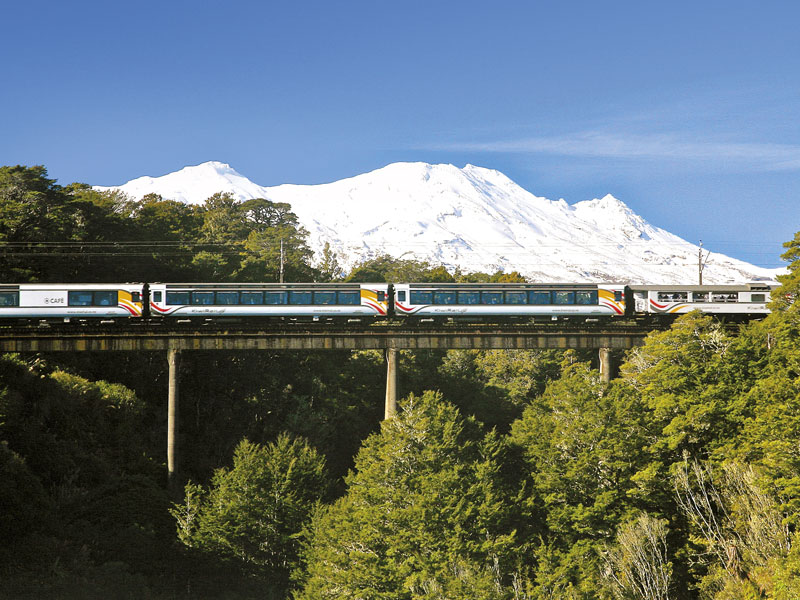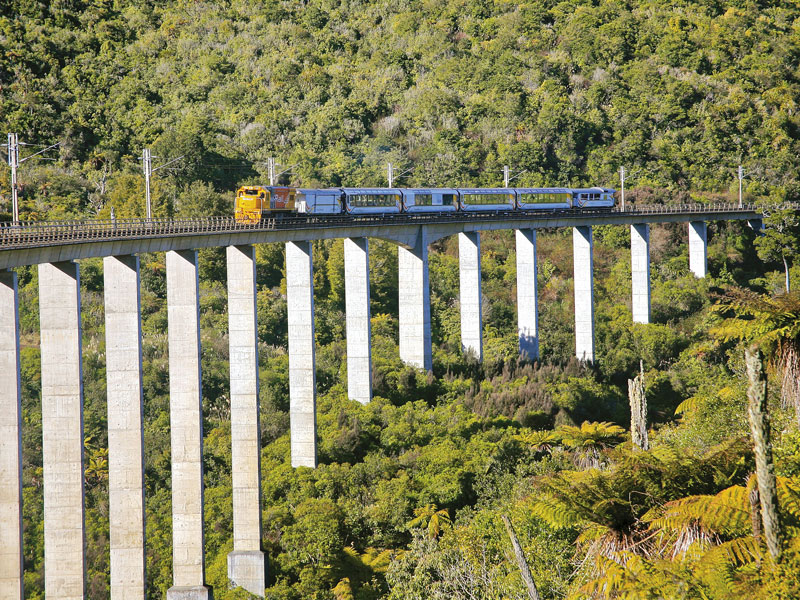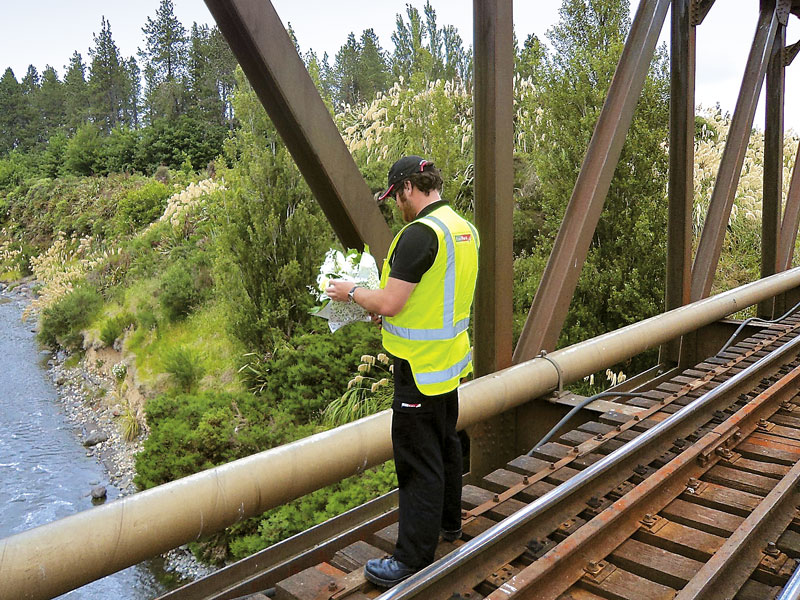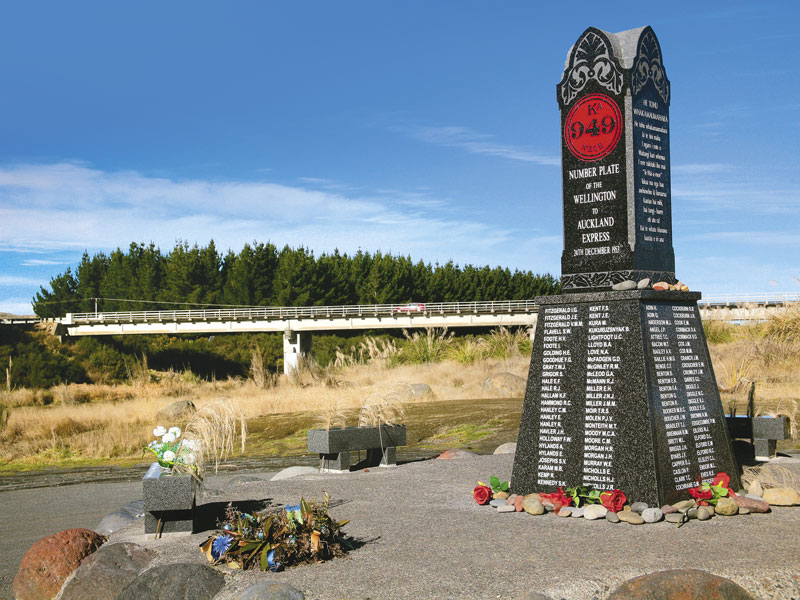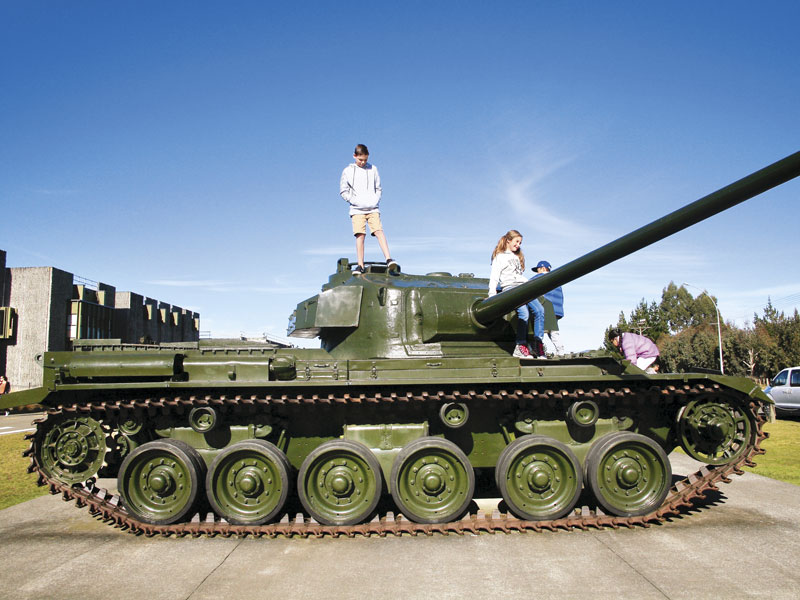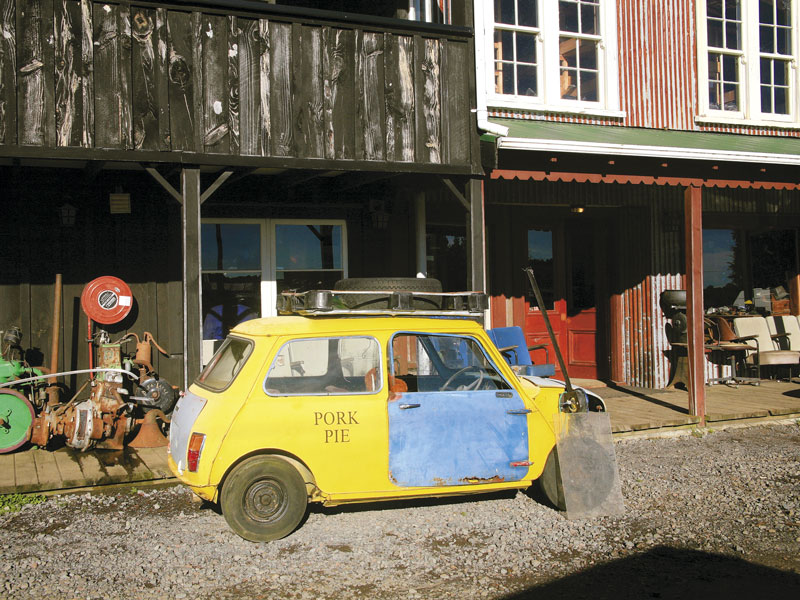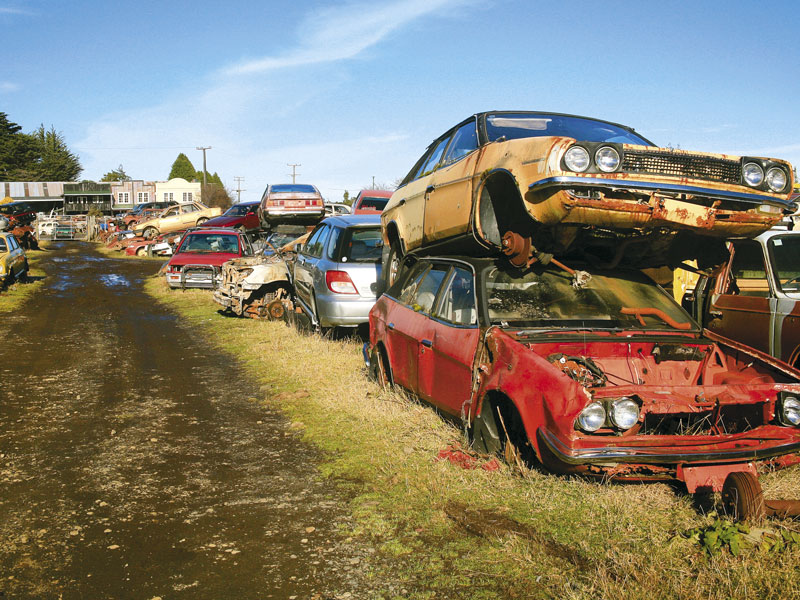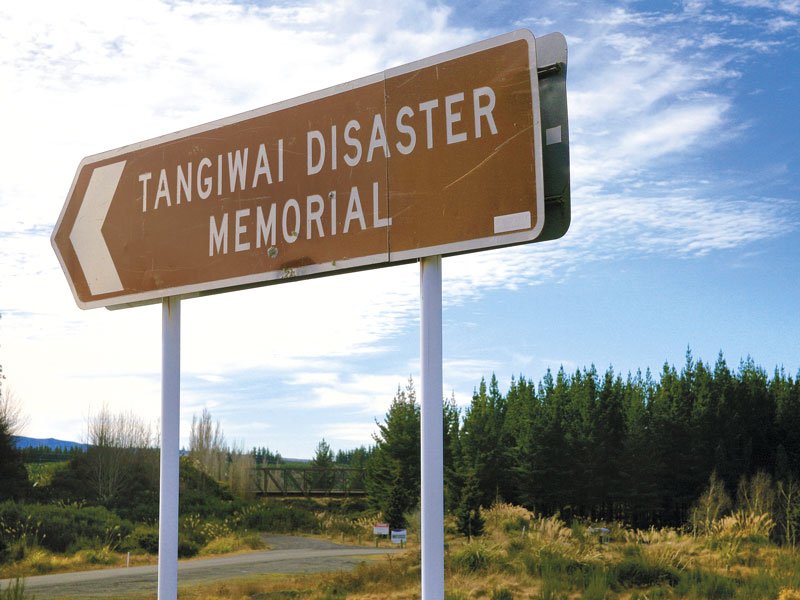It almost reads like a movie script.
Set in New Zealand during the economic boom years of the 1950s, it was the golden era of the steam locomotive as the fabled night expresses plied the Main Trunk railway between Wellington and Auckland.
It was Christmas Eve 1953 as two fully booked express trains departed Wellington mid-afternoon an hour apart. The majority of passengers in both trains were young people returning home for the holidays. A young Edmund Hillary had just conquered Mount Everest and a young, newly crowned Queen Elizabeth had arrived in Auckland on her first royal tour of New Zealand, both events adding to the festive holiday mood.
On Mount Ruapehu, a rupture in the wall of the crater lake sent a torrent of icy water down the Whangaehu River severely damaging the rail bridge at Tangiwai. Unable to support the heavy express train as it crossed a few minutes later, it collapsed, sending the locomotive and six of its 11 carriages into the raging torrent of the lahar below. Sadly, for 151 passengers of the 285 aboard the express, this was not a fictional movie.
It was a real journey, one they would never complete.
Immortalising the victims
To this day, Tangiwai remains New Zealand's worst railway accident. In the 62 years since that fateful night, the Palmerston North branch of the Rail and Maritime Transport Union commemorates the Tangiwai tragedy each year on December 24 by laying wreaths on the memorial obelisk at the site and also thrown into the river from a locomotive as it stops on the bridge.
The tradition has been observed annually since the disaster and usually involves a northbound passenger or freight train crossing the bridge close to the hour the tragedy occurred.
Between the restored railway and highway bridges, there is an obelisk and an enclosed information board memorialising the tragedy.
In March this year, a special second unveiling of the obelisk was held, revealing the names of those who died in the tragedy, giving the memorial a human face rather than just marking the event.
Four granite flower stations and a small memorial to a worker killed while working on the replacement bridge in 1957 was also added. It has been placed within the information kiosk across from the obelisk.
Funded by the Ruapehu Lions Club, the list of victims' names have been immortalised into the front and each side of the obelisk. Compared to the photos on the information board, the site has healed since 1953 with vegetation and nearly mature pine trees softening the banks of the Whangaehu River.
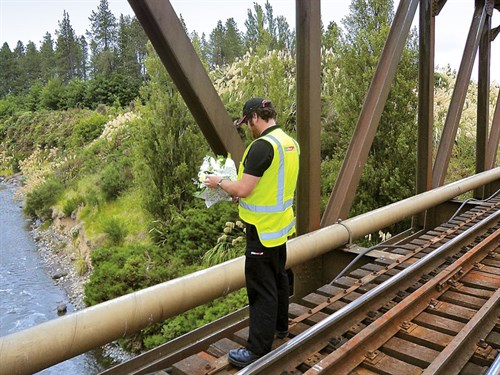
To the left of the obelisk, you can follow a track to see what is left of the original bridge abutment and a little further on to an elevated lookout that gives a clear downward view of the rebuilt Tangiwai bridge.
If you plan to photograph the Northern Explorer passenger train from Wellington crossing the bridge towards you, choose a Tuesday, Thursday or Saturday and be at the lookout no later than 12:15pm.
Despite the new additions to the memorial, I felt an overwhelming feeling of sadness here yet I could see beauty as well. With the sound of crystal clear water tumbling over brightly coloured rocks and a snow covered Mount Ruapehu shimmering in the background, the image of destruction and untimely death here 63 years ago is made a little more bearable.
A peek into the past
If you are coming from the north to visit the Tangiwai Memorial for the first time, I strongly recommend you drop by the Railway Museum near the railway station in Ohakune.Inside, there is a moving display on the Tangiwai disaster and its aftermath. It is invaluable to appreciate the sheer scale of the accident before visiting the site itself.
At Waiouru, I experienced a tragedy of a different kind at the National Army Museum, a large fortress-looking concrete building surrounded by tanks and artillery guns.
The museum is a memorial to the many men and women of the New Zealand Army who died in their service to this country from the Maori Wars to the current conflict in Afghanistan.
I knew it was going to be emotional and confronting especially since my generation was in many ways spared the horror of armed conflict.
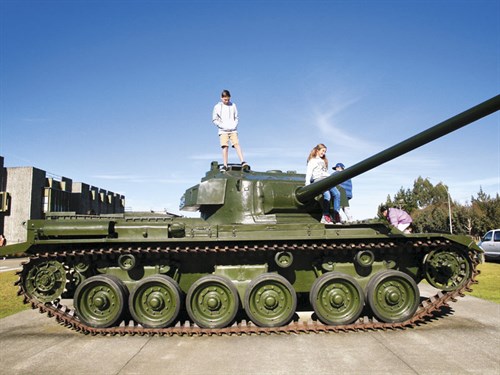
For two hours I wandered through the exhibits and collections, each one more moving than the last, until finally, I came to the Tears on Greenstone Memorial or Roimata Pounamu. It is a large wall of greenstone with a continuous stream of water cascading down it representing the endless mourning for the 30,000 plus fallen service personnel who sacrificed their lives for our country. Among the many exhibits that caught my eye and camera were the parachutists caught up in the trees and the group of soldiers scaling a wall on rope mesh.
As I left, I noticed a group of children playing on the Centurion Tank, one of the several war exhibits on static display on the museum grounds.
For me, the combination of children and war machines in a photograph made sense and justified the sacrifice of so many New Zealanders.
Vintage beauties
It was then time for a little light relief, found by the carload at Horopito Motor Wreckers—the famous bastion dedicated to the dead and dying motor vehicle. Well, mostly dead and in various stages of decay. Thanks to decades of not throwing anything away and exposure by three top-grossing films, Goodbye Pork Pie, Smash Palace, and the recent Hunt for the Wilderpeople, this is perhaps the most recognisable car yard in the country.
I had only seen the car yard from a train as it flashed for a couple of seconds. But now that I was in it, I was struck by how big it is. It seemed to go on forever with row after row of car bodies, all neatly parked or stacked up on each other with room to walk between.
My favourite section was behind the workshop buildings where there was a large selection of dead vintage car bodies. Conifers were growing between them and combined with Mount Ruapehu in the background and the remains of a heavy frost, my camera was virtually clicking away non-stop.
Other finds I stumbled across were a group of Morris Minors—a car I was familiar with having owned several back in the day—an old caravan similar to the one I used to stay in with friends as a boy, and one of the yellow minis used in Goodbye Pork Pie, or so I was told by one of the staff. Even if you are not a car enthusiast or into restoration, this place is so absorbing and interesting, the hours will fly by like minutes.
As I was leaving, the Northern Explorer train thundered by, with people in the observation car, cameras at the ready. Been there, done that. Much preferred being in the car yard rather than watching it flash by in a heartbeat.
A leisure bike ride
My final experience on this road trip was a short mountain bike ride from Ohakune (Marshalls Road car park) to the original Hapuawhenua Viaduct and back.
The bike trail uses part of the Ohakune Coach Road, a road built to link the two railheads of the Main Trunk Line before it was completed.
It was a leisurely ride through farmland and native bush, past a disused railway tunnel made redundant when the new Hapuawhenua Viaduct opened then through a moss covered section of native bush to the viaducts.
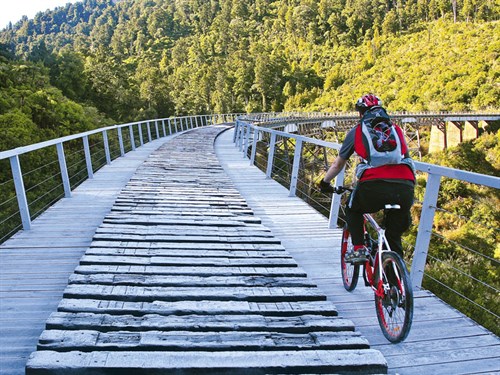
Walking across the original viaduct was a slippery adventure as a coating of heavy frost made the new boardwalk difficult to navigate, but the views across to the new concrete viaduct was well worth the effort.
This bike trail actually carries on to Horopito with the chance to see another bypassed viaduct, the Taonui, but that's an adventure to keep for another day.
Before leaving the old Hapuawhenua Viaduct, I couldn't help thinking that as a toddler I would have crossed this viaduct and passed through that old tunnel many times at night on the steam expresses to Palmerston North where my mother's family lived.
I would have also crossed the new Tangiwai Bridge in a steam train where I was taking photographs a few hours ago.
Perhaps in life, there is nothing really new, only different.The only feature that does not change is Mount Ruapehu. Standing white against a blue winter sky with the modern equivalent of yesterday's passenger trains crossing a viaduct in the foreground is a photograph, which in my opinion, defines this area.

